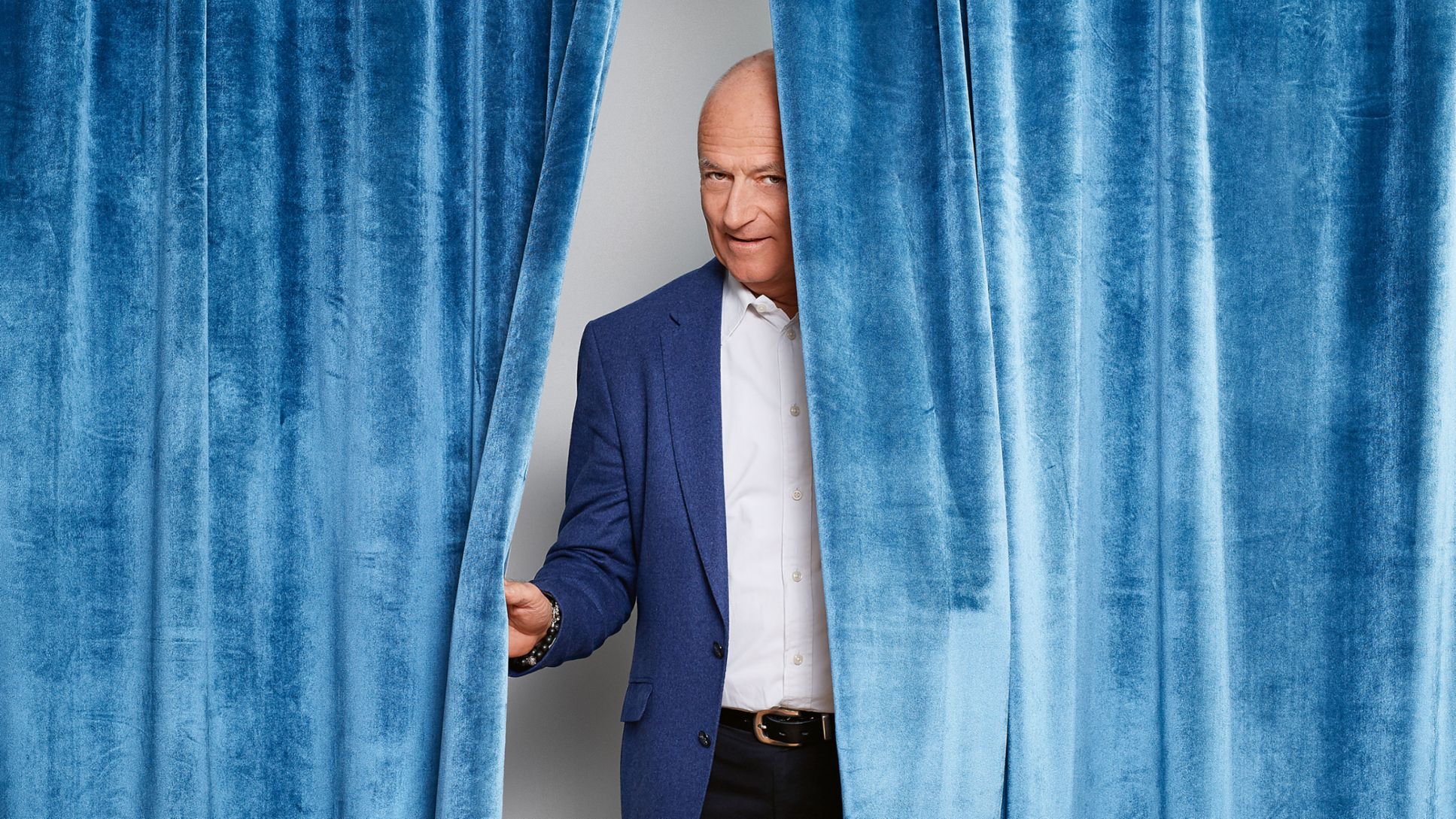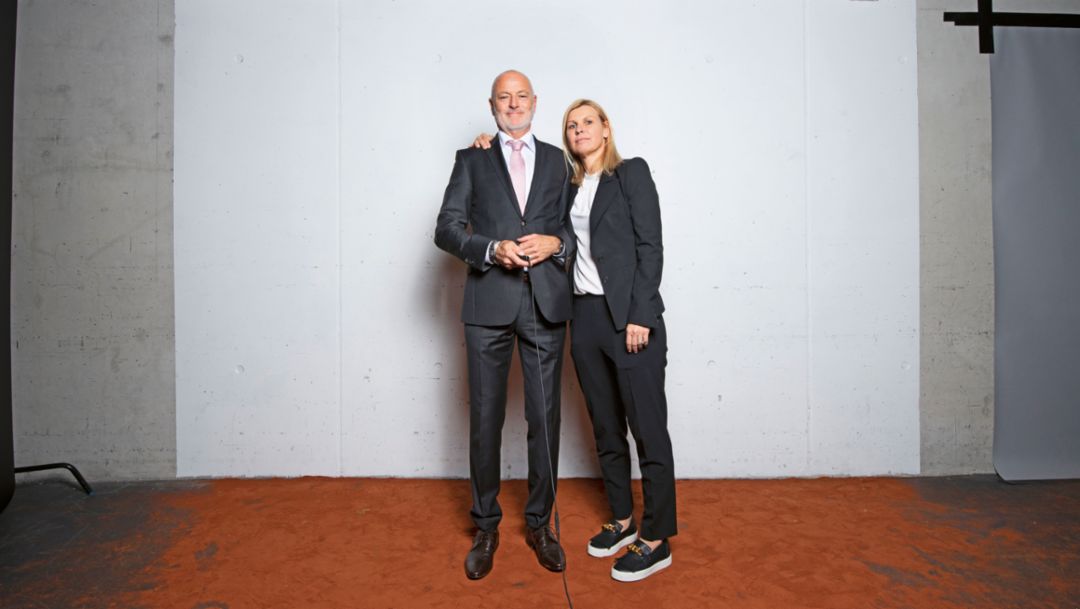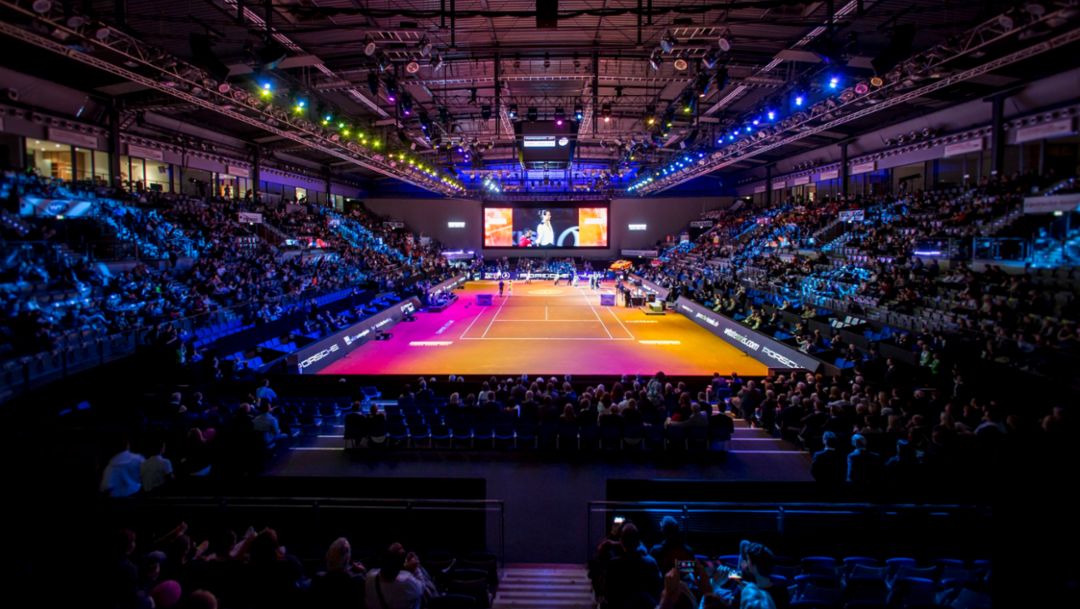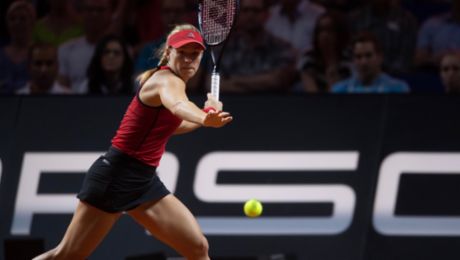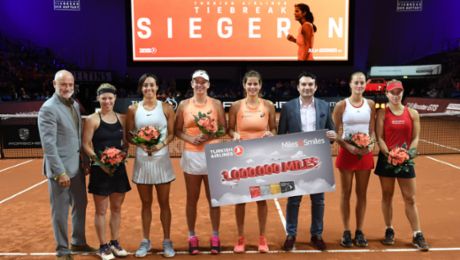For US player Coco Vandeweghe, going back to her roots helped to ease the initial sting of her defeat in the final against Karolina Pliskova. Her great-grandmother is from Pforzheim, all the reason she wanted to learn more about the customs and traditions of a homeland she does not know. Vandeweghe asked the Operating Tour Director of the Porsche Tennis Grand Prix whether it would be possible to make a quick visit to the Spring Festival. And Anke Huber made all the necessary arrangements. “The tents on the festival grounds are full on a Sunday evening. Getting a table at short notice wasn’t easy,” says Huber, “but we arranged it and got Coco and her trainer there.”
Just as after the 2018 final, there is one constant in the Porsche Arena: service is everything. The organisers want the ladies to feel at home. And they do. And keep coming back. The 2019 player field is once again a who's who of tennis: with Simona Halep (French Open), Angelique Kerber (Wimbledon) and Naomi Osaka (US Open, Australian Open), all the current Grand Slam winners are there, along with the winner of the WTA Finals, Elina Svitolina. Having eight players from the top 10 or sixteen players from the top 20 is not unusual. “We’re the only tournament on the whole WTA tour where not even the number eleven in the world is seeded,” says Tournament Director Markus Günthardt. A Stuttgart hallmark – and very unusual. Because the top players are not obliged to compete in Stuttgart.
The WTA has strict rules and a clear classification. The top ten players have to take part in the Grand Slam tournaments, the four mandatory tournaments (Indian Wells, Miami Open, Madrid Open and China Open) and in some cases the Premier Five tournaments. Stuttgart together with eleven other events is one of the Premier 700 tournaments. “We have no guarantee that the top players will compete,” says Günthardt. Despite this, almost all of them do. “We have a good overall package,” says the Tournament Director.
This starts with the perfect date. Stuttgart kicks off the clay court season in Europe. Located in the arena and surroundings are five training courts of the same standard, all within walking distance of the hotel. Not to mention the narrow and always full-to-bursting high-tech centre court. With the Walk on Court opener (Günthardt: “Our invention.”), the players are presented like popstars with music, videos and a lightshow. that’s something really unique. And then there’s the atmosphere during the matches. “All the spectators, the atmosphere – the ladies love it. Because it’s so different to many other tournaments,” says the Tournament Director.
On top of this are the benefits that an organiser like Porsche can offer. The players can try out the Porsche models whenever they want – an opportunity they make good use of. In addition, they are also given an extra hotel room for their entourage. For Anke Huber, best positioned to know what the players need as a two-time Grand Prix winner herself, the feel-good factor also plays a role. “We’re still a small and informal tournament, the ladies can move around freely.” The duo of Günthardt and Huber has been working with the same team for years. The players know who to talk to if they need something. Everyone knows everyone. Huber: “It’s like coming home for them.” Another thing the players rave about is the food. First-class catering is laid on for them in the VIP area – something that doesn’t happen elsewhere on the tour.
As is usual for Stuttgart, there is always more. The training court is located in the middle of the Sport and Lifestyle Village, which the WTA was very sceptical about at the inaugural tournament in 2006. Today it is considered outstanding. In the photobox, the players can take fun photos using a self-timer. The snapshots are so coveted by the players that other tournaments want to follow suit. Günthardt has put his foot down here. “The photobox is one of our hallmarks,” he says.
In return, the players put their stamp on the Grand Prix outside the arena also: interviews in the VIP area, autograph sessions in the Sport and Lifestyle Village, photo shoots, daring against-the-clock manoeuvres in a 911 in the Parking Challenge, events for the tournament newspaper, visits to the Porsche Museum, racing experiences with a driver on the test track in Weissach, social media activities – there’s always something happening.
And the WTA keeps a watchful eye on everything. Before the tournament begins, the organisers receive a catalogue of requirements that grows more demanding with each passing year. After the tournament comes a detailed report, where everything from the medical team to the press area to the cleanliness of the toilets is rated. It’s usually good news. One reason for this is because the players have no complaints. Since 2007, they’ve voted Stuttgart their favourite tournament in this category nine times (awards for each tournament category were introduced in 2014). That is motivation enough for the team around Markus Günthardt to keep coming up with new ideas every year. “Our tournament,” says the Director, “is as perfect as a 911 – and like the 911, gets just a little bit better with each new one.”
Info
Text: Reiner Schloz // Photos: Studio Orel
Consumption data
911 Carrera GTS Cabriolet: combined fuel consumption 8.8 l/100 km; CO2-emissions 202 g/km
